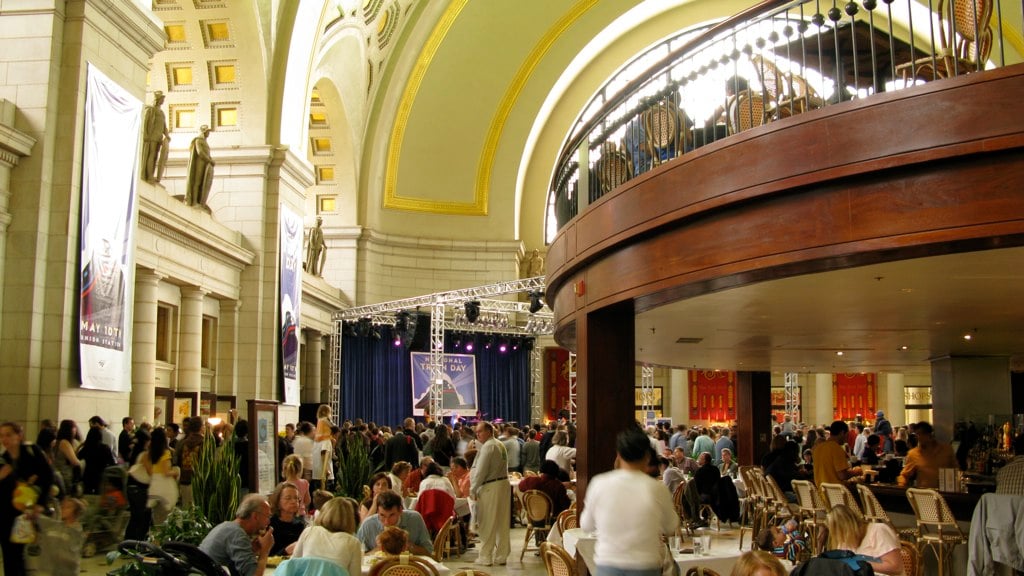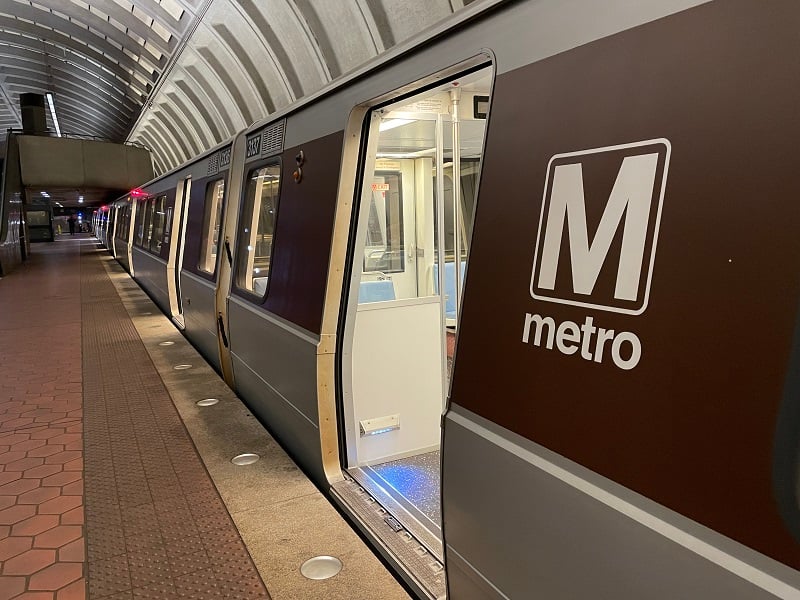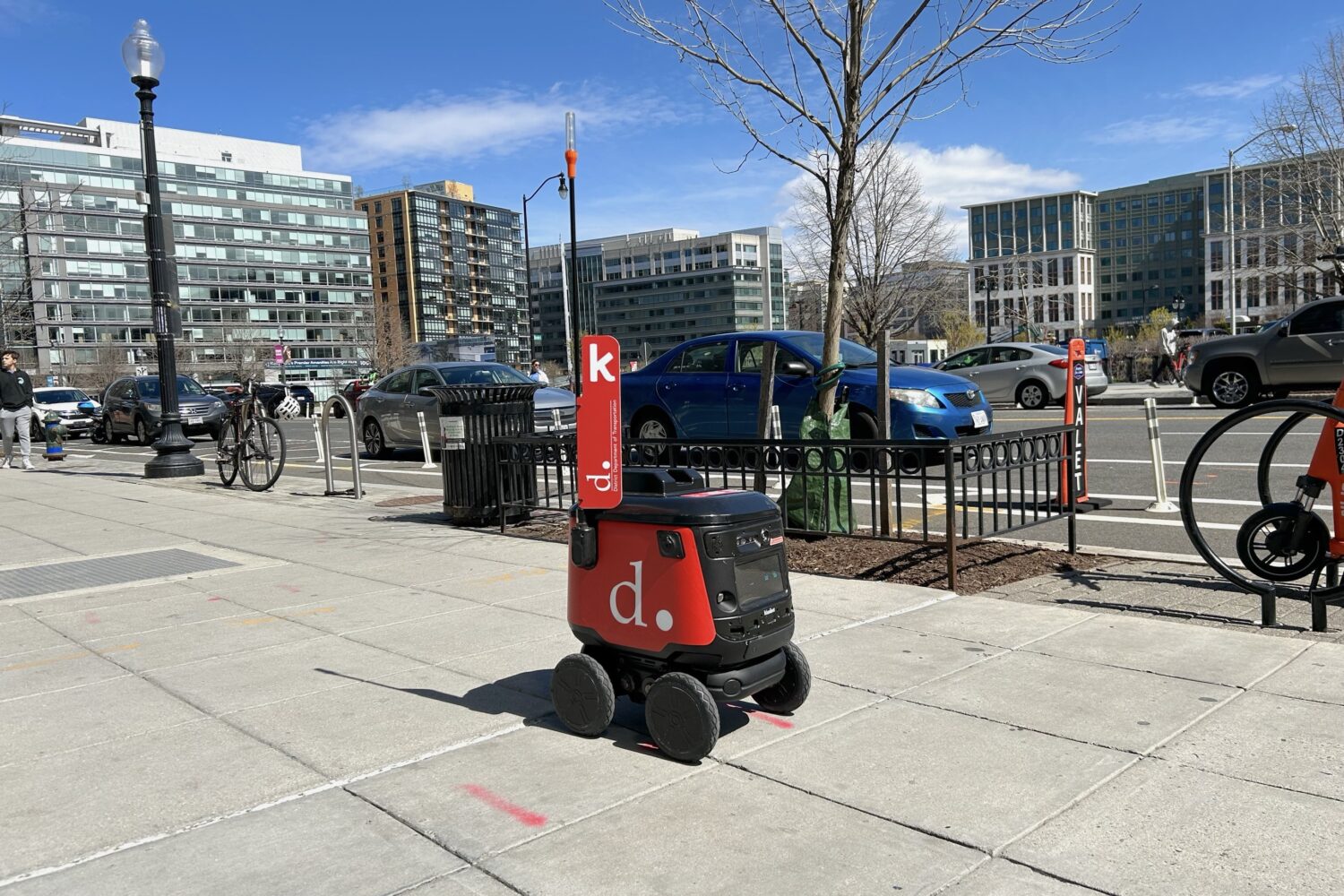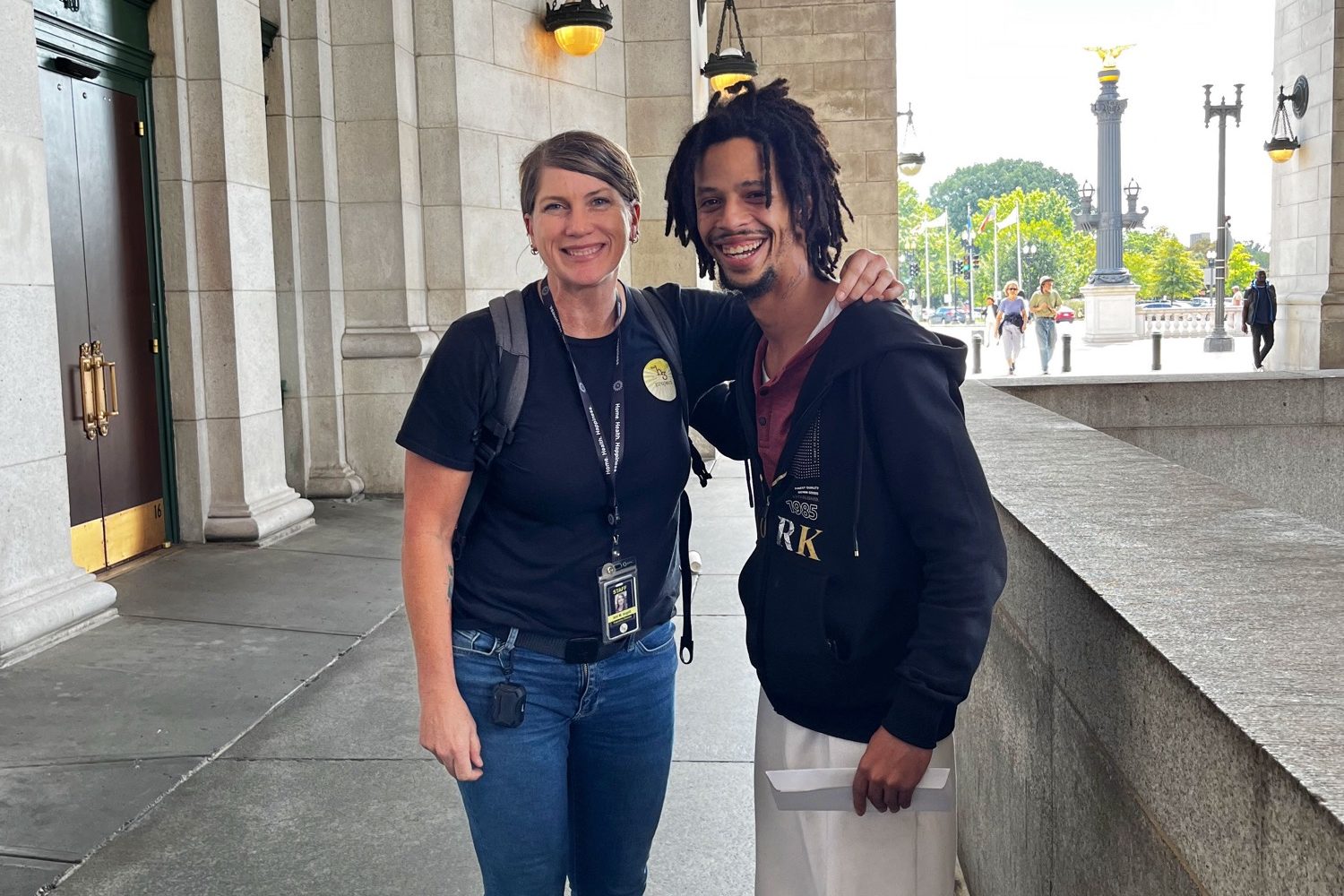Union Station’s Center Cafe closed last Monday. The 28-year-old bar in middle of the train station’s Beaux-Arts main hall won’t be missed by many–after renovations to Union Station in 1988, Alexander Polinsky-Lav wrote in the Washington Post, “The next thing that needs to go is that ridiculous information kiosk and cafe in the center of the station”–and removing it was part of the Union Station Redevelopment Corporation’s Historic Preservation Plan.
So it’s a little surprising what’s replacing the cafe: Advertising. Lots of advertising. Monitors throughout the main hall that will display ads. And advertising exhibits that Rob Nieweg, the director of the National Trust for Historic Preservation’s Washington field office, describes as temporary pavilions with tents to help “bring human energy to the space.”
To understand how historic preservation efforts resulted in advertising tents, you need to understand the complicated question of who controls Union Station. A quick rundown: the station is a federal heritage asset, owned by the Federal Railroad Administration but managed by the Union Station Redevelopment Corporation (USRC), which holds a 99-year lease that expires in 2084.
Congress founded the USRC in 1983 at the urging of the Department of Transportation, which oversees the FRA, to preserve “the historic integrity of the station while advancing its useful purpose to the region.”
USRC subleased most of the station, including the station’s retail and office spaces, to a company called Union Station Investco; that lease commenced in 2007 and will run out when the USRC’s does, as laid out in a 2014 DOT memo.
It’s a complicated soup, but the gist is this: the DOT’s decision-making control over the site will be curbed significantly for the next seven decades. The USRC decides when a structure–be it cafe bar or indoor ficus–clashes with the space’s Beaux-Arts heritage, but when it comes to who gets to set up shop–and who doesn’t–Union Station Investco is calling the shots.
Tschiffley Pharmacy spent 20 years in the station before closing in 2011, saying it was forced out by a $20,000 bill from Union Station Investco. Other smaller shops–a coffeeshop, a cookie place, a luggage store–have also left as bigger names have moved in: Shake Shack, Shop House, Chipotle, and Walgreens among them.
Union Station Investco is owned by the private real estate investment firm Ashkenazy Acquisition Corporation, the same company that runs Boston’s Faneuil Hall Marketplace and retail destinations like Barney’s in Beverly Hills. Stephanie Mineo, Ashkenazy’s senior vice president for leasing, talked to the Post in 2011 about plans for the station, including what she identified as a need for “hipper food offerings.” Mineo argued that the new station retailers would strive to offer something for everyone, though she conceded some commuters had perceived the changes as “negative.”
These changes come as USRC, Union Station Investco, and Amtrak implement a master plan for Union Station that includes preservation and expansion phases to take place over the next 15 years at a cost of $7.5 billion, according to a report released by Amtrak. The preservation arm of the mission is already underway. The ceiling restoration alone lasted three years and included the application of more than 120,000 sheets of gold leaf imported from Florence, funded in part by a $350,000 grant from American Express.
One goal for the Beaux-Arts main hall is “to restore it in all its glory,” says Beverley Swaim-Staley, president and CEO of the USRC.
So how do monitors and advertising tents fit into this vision?
According to Rebecca Miller, the executive director of the DC Preservation League, which has a consulting party agreement with Union Station Investco, the decision to close the Center Cafe was the result of a long negotiation between Union Station Investco, the USRC and the preservation community, represented by the the State Historic Preservation Office for the District of Columbia, the Commission of Fine Arts, and the National Trust for Historic Preservation, among others.
Union Station Investco wanted to install monitors in the main hall for the purposes of selling screen time to advertisers, the same as the signs that have been installed in New York’s Grand Central Station. The preservation groups compromised on the signs (“size, application, light-level were all negotiated,” says Miller); as part of that proposal, Union Station Investco agreed to abandon plans to cut escalators into the floor of the main hall and to remove the Center Cafe and information kiosk.
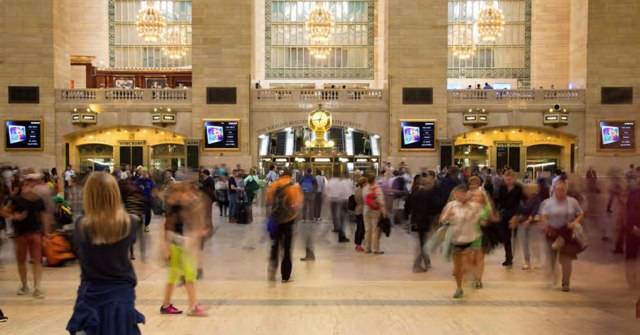
Answers vary as to what the space left by the cafe will be used for now. According to Miller, the cafe’s old footprint will be a site for new advertising opportunities.
“Historic preservation is about managing the future, and that’s about compromise,” says the National Trust’s Nieweg. He acknowledges that expanded retail options saved Union Station in the ’80s, when railroad travel was down and there “was less and less confidence that this was a useful facility.” He’s hopeful some portion of the ad revenue will make its way to the preservation efforts.
The cafe will be dismantled over the next few weeks. Last Wednesday, the Amtrak passenger information board that hung from the bar’s second tier was removed. Amtrak will install new information boards in the main hall over the transoms, where Union Station architect and designer Daniel Burnham located the original signage when the station first opened at the turn of the last century.
The water fountains, which were switched off in the ’90s and filled in as planters (they’re mostly used for seating now), will disappear in the next three months, as will the scaffolding that’s supported the ceiling restoration.
The platform benches will eventually be replaced by new models. The drinking fountains, at least for now, will stay.
USRC CEO Beverley Swaim-Staley emphasized a need for more floor space to accommodate the 100,000 customers traversing Amtrak’s second largest hub each day.
Union Station Investco declined to be interviewed, allowing instead for the USRC to speak on its behalf. But when asked about other potential changes to the retail line-up, the USRC emphasized its lack of say-so on that front. “Our job is to be stewards,” says Swaim-Staley. “We encourage the developers to bring in retailers that will be good for the neighborhood and tourists. That bring in good revenue.”
Perhaps the USRC’s Corinne Schieffer, who does marketing and outreach for the organization, best summed up how the absence of a cafe bar changes the passenger experience at Union Station: “There are several places to wait for a train. This is just another one.”

